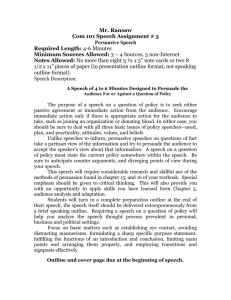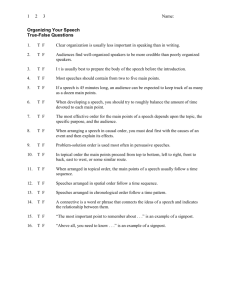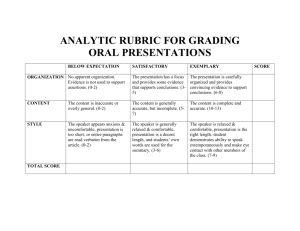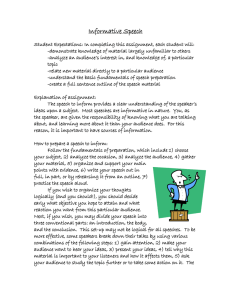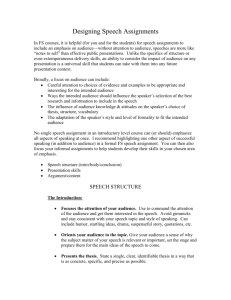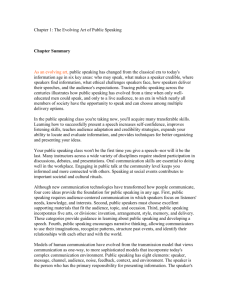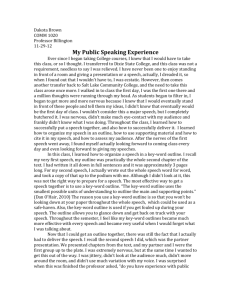“Icebreaker” Speeches A Two-Minute Speech of Self
advertisement
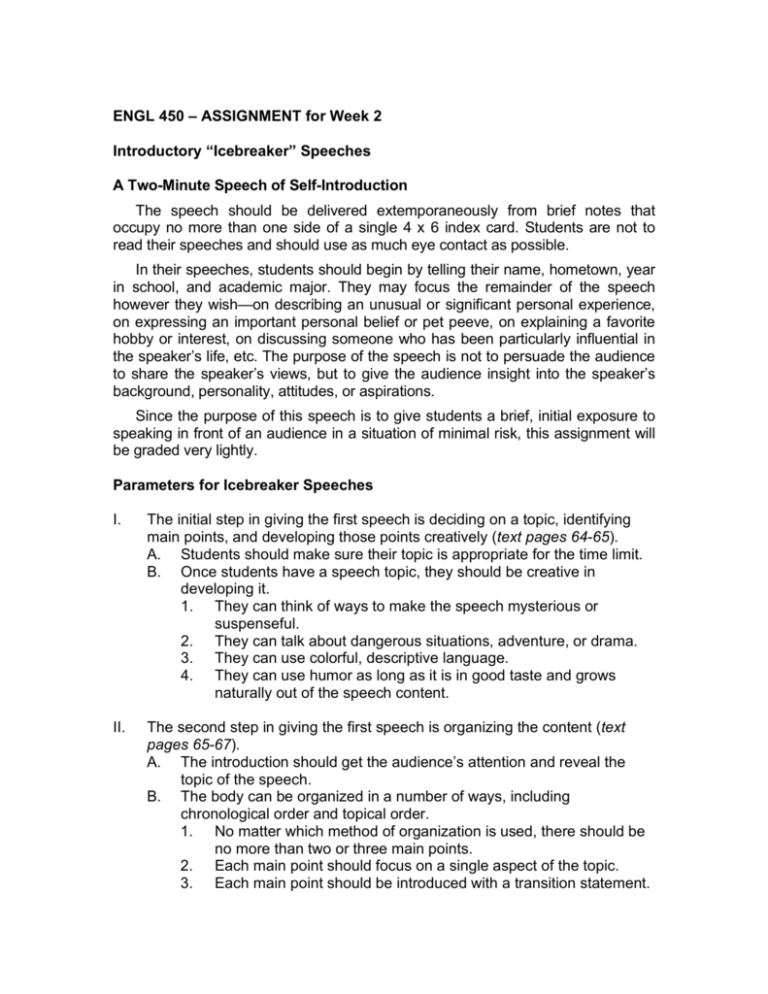
ENGL 450 – ASSIGNMENT for Week 2 Introductory “Icebreaker” Speeches A Two-Minute Speech of Self-Introduction The speech should be delivered extemporaneously from brief notes that occupy no more than one side of a single 4 x 6 index card. Students are not to read their speeches and should use as much eye contact as possible. In their speeches, students should begin by telling their name, hometown, year in school, and academic major. They may focus the remainder of the speech however they wish—on describing an unusual or significant personal experience, on expressing an important personal belief or pet peeve, on explaining a favorite hobby or interest, on discussing someone who has been particularly influential in the speaker’s life, etc. The purpose of the speech is not to persuade the audience to share the speaker’s views, but to give the audience insight into the speaker’s background, personality, attitudes, or aspirations. Since the purpose of this speech is to give students a brief, initial exposure to speaking in front of an audience in a situation of minimal risk, this assignment will be graded very lightly. Parameters for Icebreaker Speeches I. The initial step in giving the first speech is deciding on a topic, identifying main points, and developing those points creatively (text pages 64-65). A. Students should make sure their topic is appropriate for the time limit. B. Once students have a speech topic, they should be creative in developing it. 1. They can think of ways to make the speech mysterious or suspenseful. 2. They can talk about dangerous situations, adventure, or drama. 3. They can use colorful, descriptive language. 4. They can use humor as long as it is in good taste and grows naturally out of the speech content. II. The second step in giving the first speech is organizing the content (text pages 65-67). A. The introduction should get the audience’s attention and reveal the topic of the speech. B. The body can be organized in a number of ways, including chronological order and topical order. 1. No matter which method of organization is used, there should be no more than two or three main points. 2. Each main point should focus on a single aspect of the topic. 3. Each main point should be introduced with a transition statement. C. IV. The conclusion should signal the end of the speech, reinforce the major theme, and, if possible, end on a dramatic or thought-provoking note. The third step in giving the first speech is working on delivery (text pages 67-70). A. Most experts recommend speaking extemporaneously, which involves planning main points and supporting materials but not memorizing the speech. 1. Extemporaneous speakers should be familiar with the substance of their speech so they need only a brief set of speaking notes. 2. When speaking extemporaneously, students should try to feel as comfortable in front of the class as they do conversing with friends. B. Effective extemporaneous delivery requires a great deal of rehearsal. 1. During their initial rehearsals, speakers should focus on gaining control of the ideas rather than learning the speech word for word. 2. The speech should be practiced out loud. 3. When rehearsing, it is important to time the speech so it is neither too long nor too short. C. There are several things to concentrate on when presenting the speech in class. 1. Before beginning, speakers should take a moment to arrange their notes, set their body in an upright but relaxed posture, and smile at the audience. 2. During the speech, they should gesture naturally, avoid distracting movements, maintain eye contact with the audience, and speak expressively. 3. Speakers should also remember that nervousness is natural and that the anxiety they feel inside
